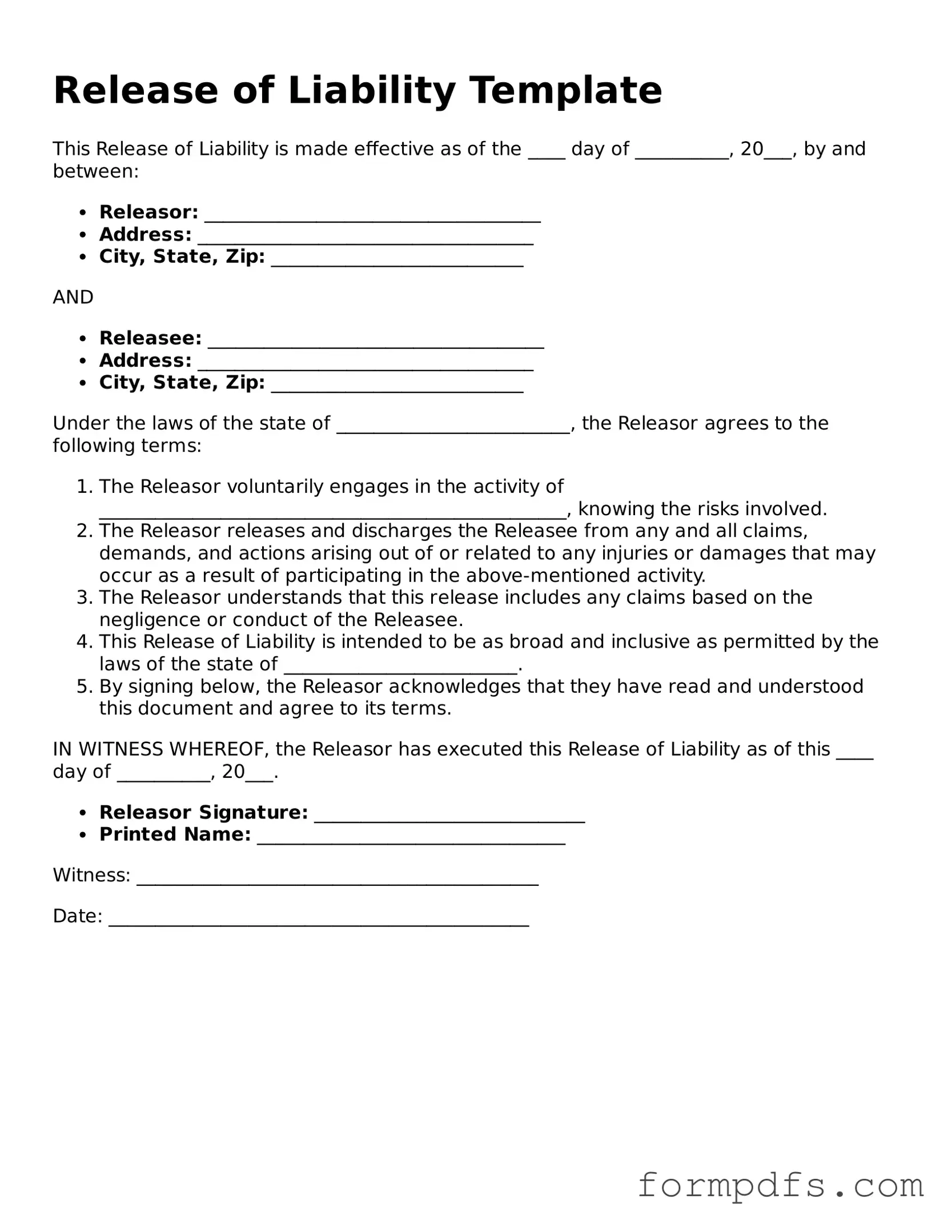What is a Release of Liability form?
A Release of Liability form is a legal document that protects one party from being held liable for any injuries or damages that may occur during an activity. By signing this form, participants acknowledge the risks involved and agree not to hold the organization or individual responsible for any accidents or injuries that may happen.
When should I use a Release of Liability form?
You should use a Release of Liability form whenever you are organizing an event or activity that carries a risk of injury. This includes sports events, recreational activities, workshops, or any situation where participants may be exposed to potential harm. It’s a good practice to have this form signed before participants engage in any risky activities.
Who should sign the Release of Liability form?
Typically, all participants in the activity should sign the form. If the participant is a minor, a parent or legal guardian must sign on their behalf. This ensures that the responsible adult acknowledges the risks and agrees to the terms of the release.
What are the key components of a Release of Liability form?
A well-drafted Release of Liability form should include the names of the parties involved, a clear description of the activity, an acknowledgment of the risks, and a statement releasing the organizer from liability. It should also specify the jurisdiction in which the form is enforceable and include a signature line for participants.
Is a Release of Liability form legally binding?
Yes, a properly executed Release of Liability form is generally considered legally binding. However, its enforceability can depend on state laws and the specific circumstances surrounding the event. It’s important to ensure that the form is clear, comprehensive, and signed voluntarily.
Can I modify a Release of Liability form?
Yes, you can modify a Release of Liability form to fit the specific needs of your event or activity. However, any changes should be made carefully. Ensure that the modifications do not alter the intent of the document or make it less enforceable. Consulting with a legal professional is advisable when making significant changes.
What happens if someone is injured despite signing the Release of Liability?
If someone is injured after signing the form, the release may protect you from liability, provided that the risks were clearly outlined and the participant voluntarily accepted those risks. However, if negligence or misconduct can be proven, the release may not hold up in court. Always prioritize safety and follow best practices to minimize risks.
Do I need a witness or notarization for the Release of Liability form?
While not always required, having a witness or notarization can add an extra layer of protection and credibility to the document. Some organizations may require a witness or notary for their own policies, so check with your specific requirements before finalizing the form.
How long should I keep a signed Release of Liability form?
It is advisable to keep signed Release of Liability forms for at least several years after the event. This duration can vary based on state laws and the nature of the activity. Retaining these documents can be crucial in case of any disputes or claims that arise later.
Can I use a generic Release of Liability form for different activities?
While you can use a generic form, it’s best to tailor the Release of Liability to each specific activity. Customizing the form ensures that all relevant risks are addressed and that the language is appropriate for the circumstances. This enhances the form’s effectiveness and enforceability.
